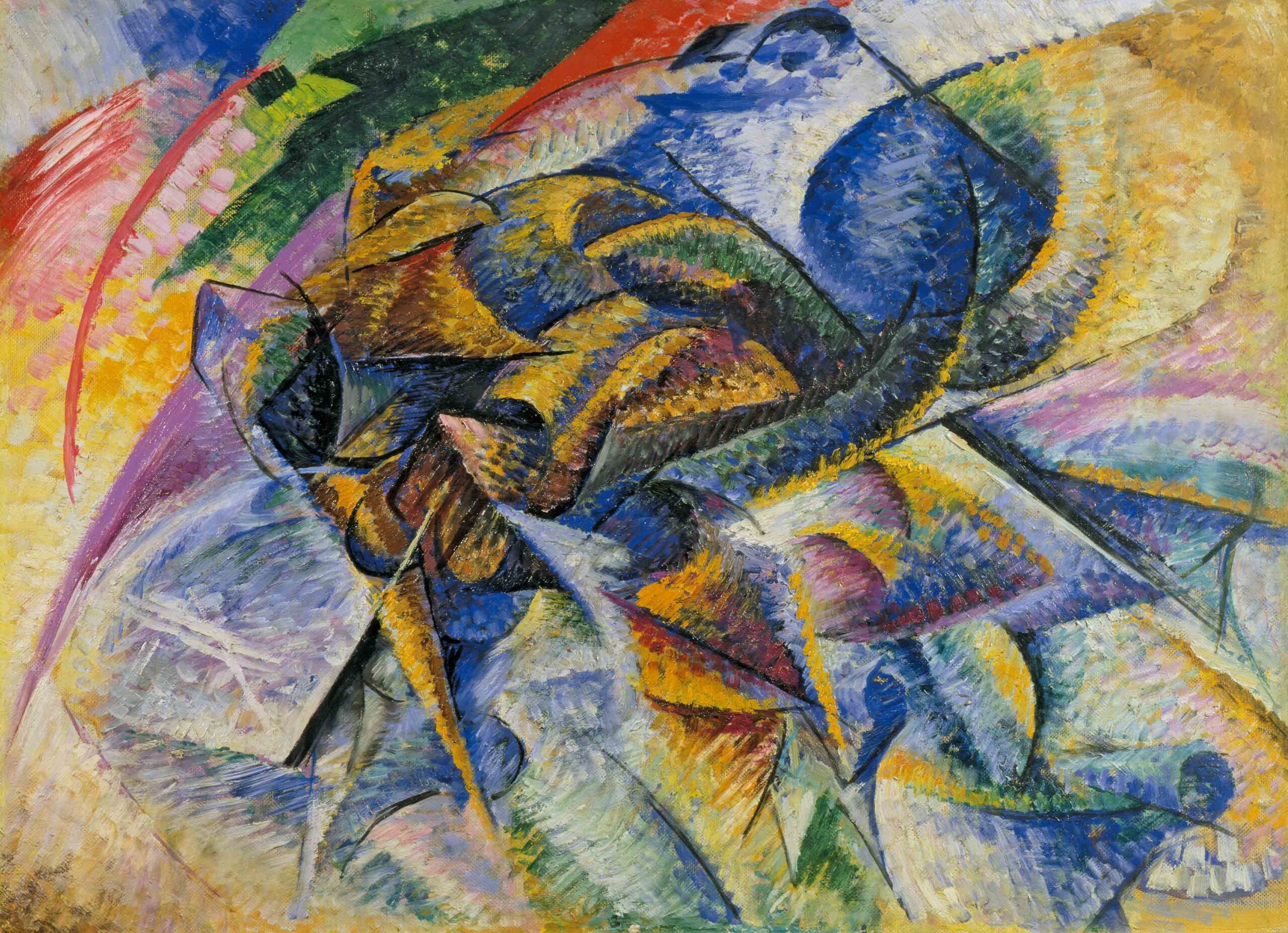In the early 20th century, a group of Italian artists known as the Futurists sought to break free from the shackles of traditional art and embrace the dynamism of the modern world. Among these revolutionary artists, Umberto Boccioni stands out as a pivotal figure who pushed the boundaries of visual representation. His 1913 masterpiece, “Dinamismo di un Ciclista” (Dynamism of a Cyclist), exemplifies the Futurist obsession with speed, motion, and technology.
The Artist: Umberto Boccioni
Born in 1882 in Reggio Calabria, Italy, Umberto Boccioni was a painter and sculptor who became one of the principal figures of the Futurist movement. Boccioni’s artistic journey began with traditional training, but his encounter with Filippo Tommaso Marinetti’s Futurist Manifesto in 1909 marked a turning point in his career. Embracing the Futurist ideals of progress, speed, and modernity, Boccioni became a key theorist and practitioner of the movement.
“Dinamismo di un Ciclista”: A Futurist Masterpiece
“Dinamismo di un Ciclista” is a striking oil painting that encapsulates the core principles of Futurism. At first glance, the canvas appears to be a chaotic swirl of colors and shapes. However, upon closer inspection, the figure of a cyclist emerges from the abstract forms.
Key aspects of the painting include:
- Fragmentation of form: Boccioni breaks down the cyclist and bicycle into geometric shapes, creating a sense of motion through repetition and overlapping forms.
- Dynamic lines: Curved and angular lines radiate from the central figure, suggesting the speed and energy of the cyclist’s movement.
- Vibrant color palette: Bold blues, reds, and yellows create a sense of energy and excitement, reflecting the Futurist fascination with the vitality of modern life.
- Multiple perspectives: The painting seems to show the cyclist from various angles simultaneously, challenging traditional notions of perspective and representation.
- Integration of figure and environment: The boundaries between the cyclist and the surrounding space are blurred, illustrating the Futurist concept of “simultaneity” – the interconnectedness of objects and their environment.
The Significance of “Dinamismo di un Ciclista”
This painting is more than just a depiction of a cyclist in motion. It represents the Futurist ideology in several ways:
- Celebration of technology: The bicycle, a symbol of modern transportation, is glorified as an extension of human capability.
- Rejection of static art: By capturing motion and energy, Boccioni challenges the traditional notion of painting as a frozen moment in time.
- Synthesis of space and time: The painting attempts to represent not just a single moment, but the experience of movement through time and space.
Legacy and Influence
“Dinamismo di un Ciclista” remains one of Boccioni’s most celebrated works. Its innovative approach to representing motion and its bold aesthetic have influenced generations of artists, from the Cubists to contemporary abstract painters. The painting continues to captivate viewers, serving as a testament to Boccioni’s artistic vision and the enduring impact of Futurism on modern art.
Tragically, Boccioni’s life was cut short when he died in 1916 at the age of 33. Despite his brief career, his contributions to art history, exemplified by works like “Dinamismo di un Ciclista,” ensure his place as one of the most influential artists of the early 20th century.



